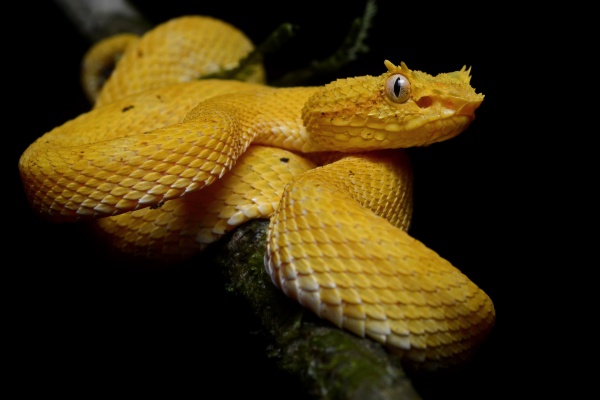Facts About Eyelash Palm Pit Viper
The Bothriechis schlegelii, commonly known as the eyelash viper, is a venomous pit viper native to Central and South America. Renowned for its small size, diverse color variations, and the distinctive "eyelashes" formed by scales above its eyes, this species is the most prevalent green palm-pitviper and is a popular exhibit in zoos. It is named after Hermann Schlegel, a German ornithologist and herpetologist.
Eyelash vipers typically grow to lengths of 55-82 cm, with females generally being larger than males. They are characterized by their triangular heads, vertical pupils, and heat-sensing pits on their heads. Their coloration varies widely, ranging from red, yellow, brown, green, to pink, often with speckles. Despite these color variations, it is impossible to distinguish males from females by appearance alone.
Primarily nocturnal, these snakes prey on small rodents, frogs, lizards, and birds. They are ambush predators and are adept climbers, using their tails for maneuvering through vegetation. Breeding occurs year-round in warm climates, with females giving birth to live young after incubating the eggs internally for approximately six months. The males engage in a courtship ritual known as the "dance of the adders."
Eyelash vipers inhabit humid, tropical environments abundant in vegetation and are frequently found near water sources. Although they have not been evaluated by the IUCN Red List, their populations may be threatened by habitat loss due to deforestation, agriculture, and urban development. Despite their venomous nature, they are popular in the exotic pet trade and are well-represented in zoological collections.
In captivity, these snakes are relatively easy to care for and readily accept mice as food. Some herpetologists recognize a high-altitude form of the species, which may constitute a subspecies or even a separate species. Additionally, they are known by other names such as eyelash pit viper, Schlegel's viper, and eyelash lancehead. While wild exports of these snakes have decreased, they still occur occasionally.

 Costa Rica
Costa Rica